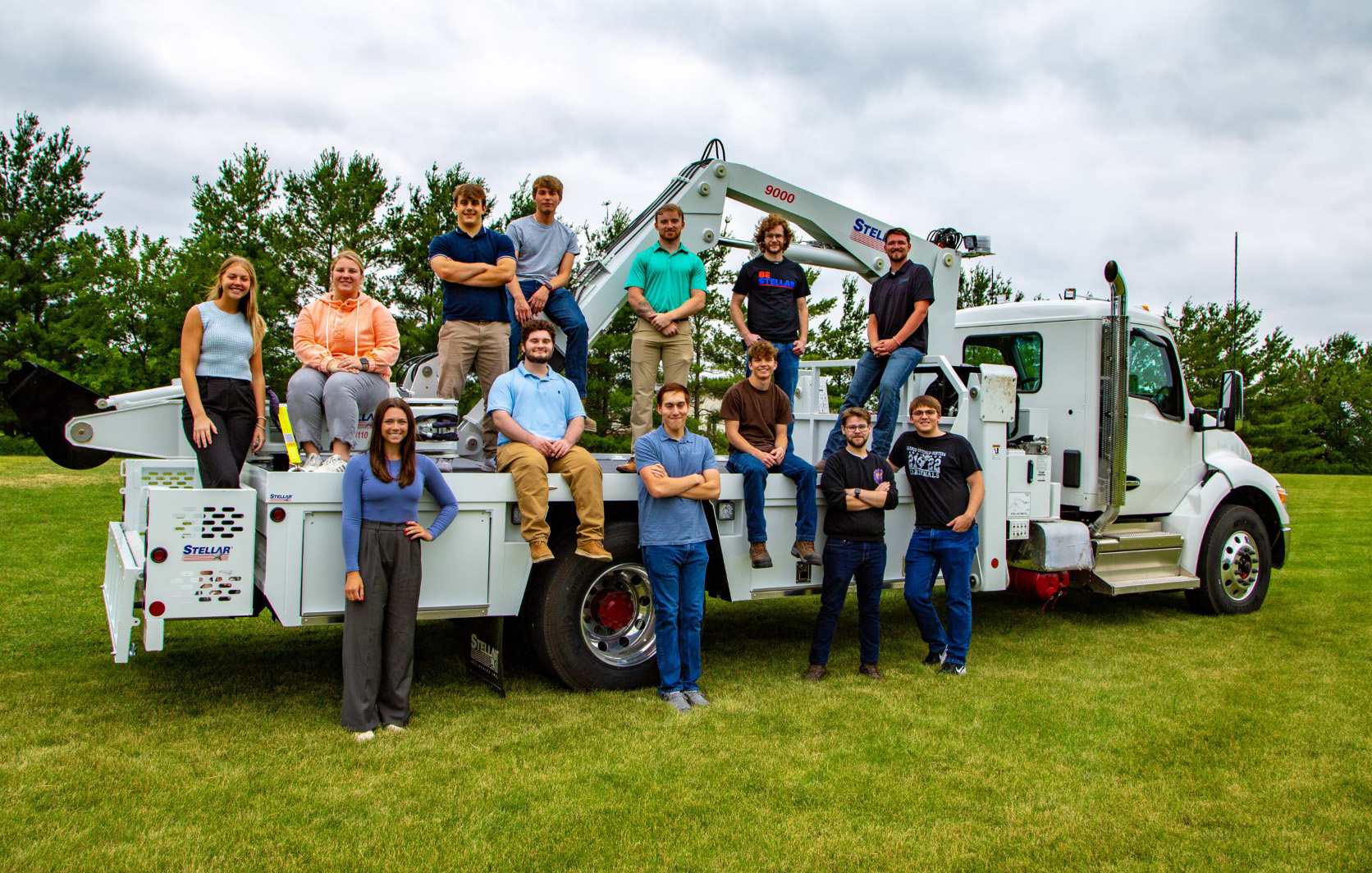“There is a war for the most talented, dependable people to join your team versus someone else's team.”
That’s how national career search and talent acquisition expert Chris Czarnik began his “Best Practices in Employee Retention and Recruitment” session at AEM’s Second Annual Workforce Solutions Virtual Summit held earlier this summer, and the numbers back up Czarnik’s assertion.
There are 9-1/2 million less people in Generation X – Americans born between the mid-1960s and the early-1980s – than in the Baby Boomer Generation – Americans born between 1946 and 1964. Compounding the situation, there are some 10,000 to 15,000 Baby Boomers eligible to retire every single day in America.
“What that means is, in the next 8-1/2 years, there will not be enough breathing human beings in the U.S. country to fill all the jobs that will become available,” said Czarnik. “With the options job-seekers have, for the first time, there is a real equalization of opportunity and power between employers and the people who are looking for jobs with employers. Recruiting and retaining talent is going to be much more difficult.”
For more support, ideas, or information related to diversity and inclusion, get started by visiting the AEM Workforce Solutions Toolkit. To access Chris Czarnik’s full presentation, check it out on demand.
The Cost of Losing Employees
Nowadays, the competition by companies to find great people and keep them “is extremely competitive and expensive,” observed Czarnik. According to the Society for Human Resource Management, it costs between 25% to 35% of any employee’s annual wages to lose them and have to recruit a replacement.
He recommended companies “think about the employees you are trying to get just like the customers you are trying to get. You have to speak directly to them.”
To do that, personas – a clear idea of who your potential employees are – have to be created, stressed Czarnik. To accomplish this, get sales and marketing people involved because “someone who is new to recruiting people based on creating a persona will find it overwhelming.”
Sales and marketing know how to do it, he explained. They are skilled at identifying the type of person who might buy from their company and they tailor their sales message directly to those people, increasing the odds of selling to them.
Unwilling… or Unable?
Companies also need to determine “if people are unwilling or unable to come to work for your company,” Czarnik said. “If they are unable, it means that they don’t know your company exists. They have never seen your job ad or, more importantly, they do not see themselves in your organization or in your industry.
“If they are unwilling, it means they saw your job ad and they know your company exists, but they may have some commonly held but false preconceived notions about your organization that keeps them from applying.”
Questions to Ask
Czarnik asserted that everything needed to know about how to recruit great people is “already in the people that work for your organization, but you have no idea how and why they came to your organization. Surveying them will provide a wealth of information."
He advised asking the current best employees hired in the last 18 months such things as:
- Why did they came to your organization?
- What did they knew about your organization before they found you?
- Why do they stay?
- What were their commonly held (but false) preconceived notions about your organization and industry?
- Why did they believe they could leave one industry and be successful in your company in a completely different industry?
Can Job-Seekers Find What They’re Looking For?
A lot of frustration comes from putting out a job ad and there are no applicants, noted Czarnik. “Can people easily find your job ad? Typically, job seekers have no idea that your company exists or how to find it.”
He suggested pretending to be a job-seeker looking for the type of jobs your organization has available. “Try and find your job on whatever job posting sites you use without using the name of your company.
“Do this exercise and you will find that your ad is incredibly hard to find. Once you do find it, determine if your job ad is different than all the other similar job ads.”
Create Job Ads That Grab Attention
Do not try to get happy people to leave their job for more money, warned Czarnik. “The war for talent cannot be won with money.
“The people you are fighting for, especially 18- to 27-year-olds, are not necessarily in the job they want. They are in a job they could get. The focus should not be on people who are unemployed, but on people who are underemployed. Their skills, abilities and talents are not aligned at all with the kind of work they are being asked to do.”
If companies survey their best employees, they will find that many of them made the successful transition into their jobs coming from different industries, he observed.
Make a list of those industries and create a job ad that says your company’s last five great employees came from a bakery, retail store, engine repair business and a paving company,” Czarnik continued. “If that sounds like you, we’d love to talk to you.”
Nowadays, job ads need to be “created to get people’s attention and let them know they can transfer from one industry to another,” continued Czarnik. “You have to invite people in.”
He advocated getting rid of the education and experience requirements in job ads because “this keeps people from applying.
“Because we need talent, you have to accept people from different industries who might have the mechanical aptitude or the ability to do the kind of work that you have. Job ads need to tell them that.”
Companies can make their job ads stand out by not selling the job but rather, selling the first conversation, Czarnik advised. “Job ads need to invite people in and say if this job sounds interesting to you, we would love to talk to you. That gives you a chance to sell your job opportunities.
“Good recruiting ads are not about answering questions,” he stressed. “They are about creating questions that people can only get answered by interacting with your company in some way.”
Write jobs ad that look different than everybody else, advised he said. Do not give job seekers the opportunity to compare your job with other similar jobs. “Make your job ads so different, so inviting, so easy to reply to that job seekers can’t possibly pass your ads by.”
Why are They Working?
“Not everybody who works does so for self-fulfillment,” observed Czarnik. “Some work for what the job buys.
“For entry-level positions, instead of saying entry-level positions in job ads, say our entry-level assemblers drive motorcycles, new cars and buy their first house. If you want to learn how, come and talk to us.”
Young applicants are particularly influenced by the ‘toys’ they can get by working, he noted.
“Invite people in for the conversation and decide whether you are selling the job and the merits of the job or you are selling what the job buys.”
No Experience Preferred
Czarnik said most entry-level positions do not require experience, but most job ads for these positions specify experience requirements.” No experience required” is the worst thing you can say to someone who does not have experience.
“What you are really saying is we want experience, but because we could not find people with experience, we are willing to hire you,” he added.
Consider the value of the phrase: ‘No experience preferred,’ Czarnik recommended. “Job-seekers who may be transferring from another industry into your industry have faced job ads that tell them they probably cannot do that.”
Czarnik explained that ads that say “no experience preferred” generate two types of calls:
- The person who says they have never worked in manufacturing, but on the side does things like roofing, pouring concrete and working on people’s cars. This person asks, “Do you really want to talk to me?”
- The person who asks, “Why do you want someone with no experience? I have experience, so why don’t you want to talk to me?”
If both instances, Czarnik said the answer is: “We would love to talk with you. Please come on in.”
Strategies to Retain Employees
Discussing retaining employees, Czarnik observed that many organizations worry about job openings, but they do not always spend enough time nurturing employees they have hired. With younger generations now switching jobs roughly every 3.5 years, it is critical to keep workers engaged and challenged to stop the cycle of reoccurring openings.
In addition, he highlighted some strategies for holding on to employees:
1. Great retention starts with being much more particular about the person you bring into your organization. The military has a saying: “If you need it bad, you’ll get it bad.” Many companies, because they have such difficulty hiring people, are now considering people they would never considered several years ago.
2. Make a concerted effort to improve manager-employee relationships within your organization. Nationally, the top reason people leave their jobs is a poor relationship with their direct supervisor or manager.
“How much time do you spent with supervisors or managers teaching them how to be active listeners, or do conflict resolution, or do analytical problem solving? asked Czarnik.
“Have you promoted someone to supervisor or manager because they were technically amazing but have no people skills?” he continued “That would be like awarding a fish for being a good swimmer with the opportunity to climb a tree. No matter how good the fish was in the water, it is going to be a disaster climbing a tree.”
Czarnik encouraged companies to invest in soft skills and leadership training for supervisors and managers if they do not already have such measures already in place. There are dozens of free online classes for this, he pointed out.
3. Advise all supervisors and managers that every question that comes to them be answered not only with what they want the employee to do but why they want them to do it. Especially in the case of Millennials – people born in the 1980s or 1990s.
“Millennials, who are becoming the largest part of the workforce, do not know a world without Google,” he noted. “They have been asking ‘Why?’ their entire lives. Why they should do something is every bit as important to them as what you actually want them to do.”
4. If your company does not currently have a buddy system for new employees, establish one, counseled Czarnik. A buddy system is a great aid in onboarding new employees into the workplace.
Focus on the First 90 Days
It has been Czarnik’s experience that “when employees leave an organization is a real good indicator about what is going on inside one’s organization and that will help you take corrective actions.”
When people leave within the first 30 days, they were significantly surprised about something about the job or the company, he explained. If people stay after 30 days but leave after 60 days, the work they are being asked to do is outside their desired skillset and abilities.
He proposed checking with new hires within the 30- to 60-day timeframe. Ask them what kind of work they do outside of work or what their hobbies are at the moment.
“This is a great way to realign people to a different type of job before you lose them out the door, as most employees will not tell you they are unhappy,” he continued.
“They’ll just leave.”
Learn More
For more support, ideas or information, get started by visiting the Workforce Solutions Toolkit or contact AEM Senior Director of Workforce Development Julie Davis at jdavis@aem.org.
For more on topics important to equipment manufacturers, subscribe to the AEM Industry Advisor.





